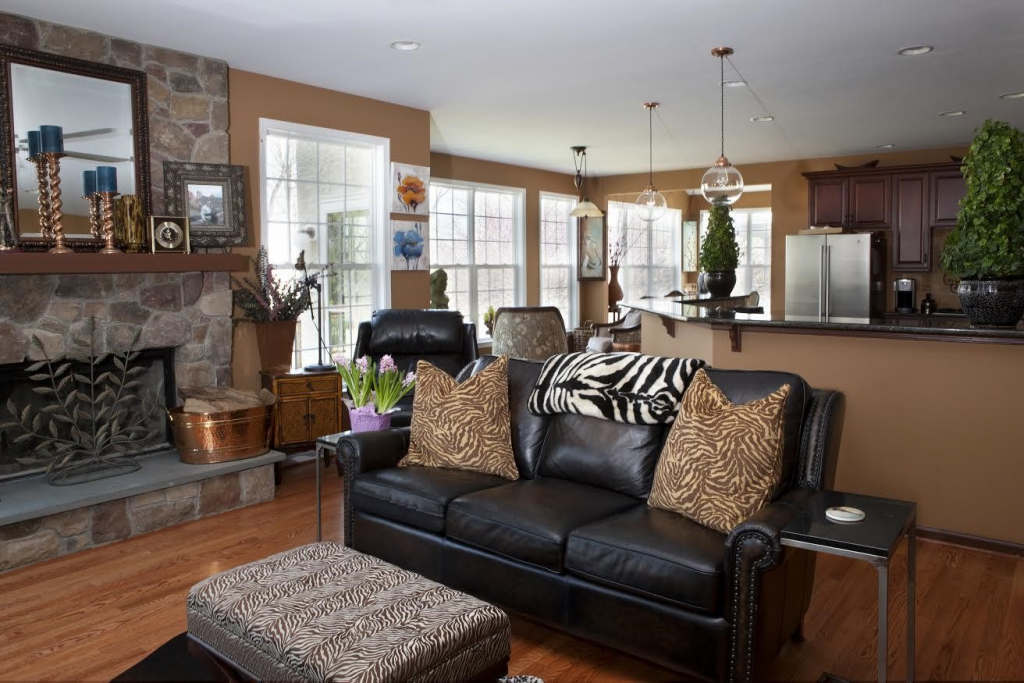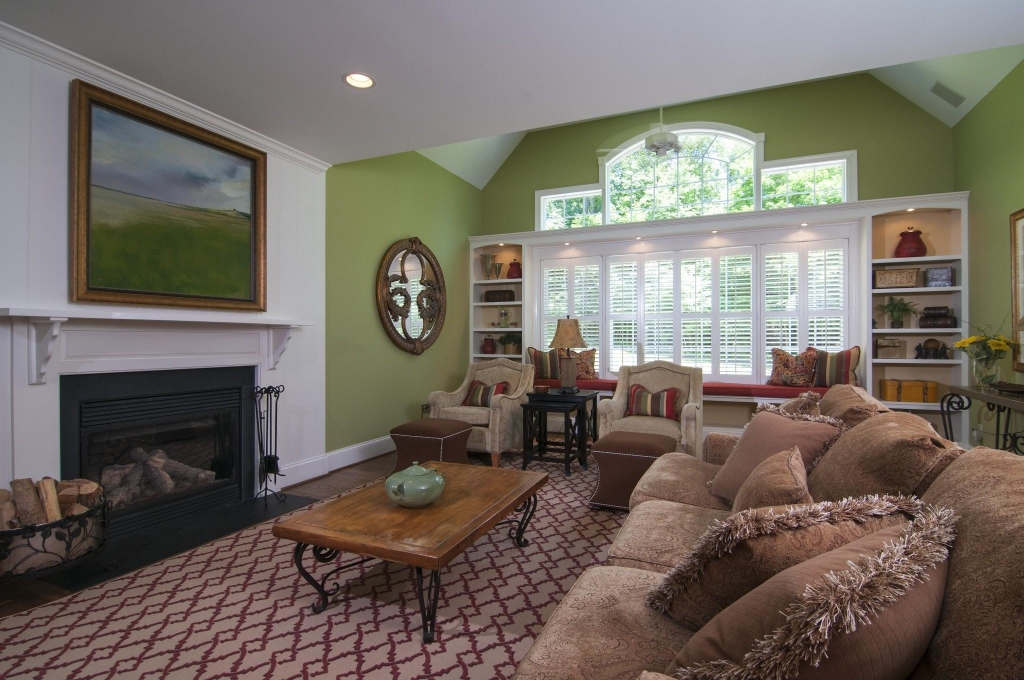Picking Paint Colors for an Open Floor Plan

How to Pick Paint Colors in an Open Floor Plan
Choosing paint colors for an open floor plan can seem like a difficult challenge to many homeowners.
Because this style lacks clear room separations, areas need to be defined in a different way. Whereas in more “traditional” spaces, walls, doorways and other borders provide natural “breaks” between different decorating styles, open floor plans provide a unique challenge. How do you go about creating different styles in different areas? Or would you prefer a more uniform approach?
One of the ways to define the distinct areas throughout your home is through thoughtful home decorating paint color selections.
There are three different ways to choose paint colors in an open floor plan:
Stick to one hue throughout, usually a neutral shade.

Paint colors for your home can do one of two things: They can be a focal point all their own, or they can disappear into the background, allowing the space itself — and your furniture — to define the room’s character.
If you find yourself in the latter camp, consider using just one hue throughout your home. This is a good choice if you want your paint to be more of a backdrop to your furnishings and not the focal point of the space. However, this doesn’t necessarily mean you have to select a light house paint color.Natural and artificial lighting can also contribute to establishing a color “tone” for the space. Though the walls may be continuous, lighting can change a color from one area to the next. What looks green in one light might look very blue in another.
Define areas with accent colors.

Although the environment you’re working with might not be intuitively divided into separate spaces, you can still take steps to make sure the function of each area is clearly defined by its color and personality. Consider choosing different accent colors for different areas.
This can really bring warmth to an open floor plan, and it is a good way to define specific room areas. It’s also a way to incorporate bolder accent colors — colors, for example, that you might’ve considered too bold for a full wall, but that you still want to incorporate into the personality of your home. A kitchen wall could be accented in a green, for example, and a living area could have a chocolate accent wall.
The only rule of thumb with this design is that the adjacent walls should be painted in a less vibrant tone, thus allowing the eye to rest. This approach will complement the more vibrant accent colors and bring balance to your space.
The third way, and a personal favorite, is an in-between of the two styles.
Of course, out-of-the-box thinkers and more daring decorator’s might consider a third option: A blend of the two techniques we’ve looked at so far.
This approach involves using a monochromatic scheme, but incorporating different shades of the same color to define or accent individual spaces. The simplest way of doing this is by sticking to the colors on one paint strip, and using the deeper tones on the same strip as your accents.
This design allows the eye to move seamlessly around the space, but also provides the opportunity to use bolder accent colors. The end result is a room that adheres to an ordered, uniform color scheme but still allows for individual features to be called out with more “adventurous” hues of the same color.
Once the wall color (or colors) is determined, there is still trim and ceiling paint to be selected. In an open floor plan, it’s best to keep the trim and ceiling colors the same throughout, so the space feels unified and has continuity and flow.
Of the three methods, this one might also be the most practical. You’ll be buying several house paint colors in smaller quantities, rather than significant quantities of just one or two colors. If one color doesn’t quite work out the way you expect and you can’t return your bucket of paint (which is the case at almost every hardware store), you’re not out a bunch of cash.


